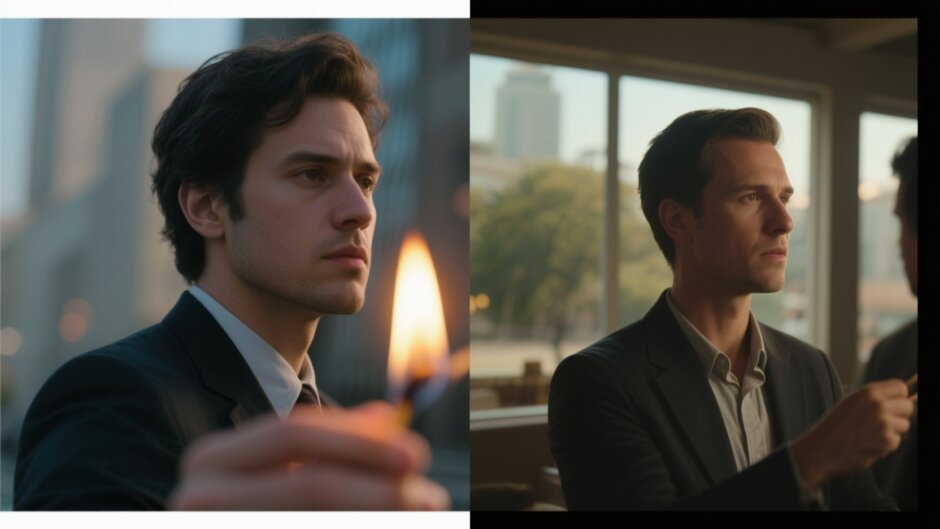Have you ever been watching a film and suddenly one scene just melts into the next so smoothly that you don’t even realize there was a cut? That’s the beauty of match cut editing. It’s a filmmaking trick where two different shots are connected by something they share—maybe a similar shape, a repeated action, or even a matching sound. This makes the whole video feel connected and keeps people watching without getting distracted.
In this guide, we’re going to break down everything about match cuts. What they are, the different kinds you can try, some famous movie examples, and—most importantly—how you can make your own, even if you’re just starting out. And yes, we’ll also show you how CapCut can help make all of this way easier.
What Exactly is a Match Cut Transition?
A match cut transition is a way of moving from one scene to another by matching something in both. It could be a color, a movement, a shape, or a sound. The goal is to make the switch feel so natural that the viewer barely notices it.
Think of it like this: someone throws a basketball in one scene, and in the next, someone else catches a baseball in a totally different place. Even though it’s not the same ball or the same person, the action ties them together. That’s a match cut transition.
People use match cuts in movies, commercials, music videos—pretty much any kind of video. It helps the story flow and makes the editing look pro.

The Various Types of Match Cuts
Not all match cuts are the same. Depending on what you match, you can create different effects and feelings. Let’s go through the main types.
Graphic Match Cut
A graphic match cut is when two shots are connected because they share a similar visual element. It could be a shape, a color, or a pattern. Imagine a shot ending on a full moon, and the next beginning with a round clock. Even though they’re totally different objects, the circle makes the transition work.
This kind of match cut is often used when time or location changes, but you want to keep the visual flow smooth.
Action Match Cut
This one is all about movement. An action that starts in one shot continues in the next, even if it’s a different person or place. Like someone kicking a ball in one scene, and in the next scene, a different person in a different field catching it. The action itself becomes the bridge.
Action match cuts are great when you want to keep energy high, like in sports clips or action sequences.
Audio Match Cut
Here, it’s the sound that does the work. A sound from the first shot continues into the next, even if what we’re looking at changes completely. For example, the roar of an airplane in one scene becomes the sound of thunder in the next.
Audio match cuts are super useful for creating mood or emphasizing a theme.
Conceptual Match Cut
This one is a little deeper. Instead of matching something you see or hear, you match an idea. A shot of an empty desert could cut to a crowded subway train—both express loneliness in different ways.
Conceptual match cuts make people think and feel more deeply about what they’re watching.
Eyeline Match Cut
Very common in conversations. A character looks at something off-screen, and the next shot shows what they’re looking at. It helps the audience see through the character’s eyes and keeps things clear.
Eyeline matches are used all the time in films, especially in dialogue scenes.
5 Really Cool Examples of Match Cuts from Movies
Some of the best filmmakers use match cuts in unforgettable ways. Here are five classic examples.
2001: A Space Odyssey
There’s a famous scene where a bone thrown by an ape turns into a spaceship floating in space. This match cut isn’t just smooth—it tells a whole story about human progress, from simple tools to advanced tech.
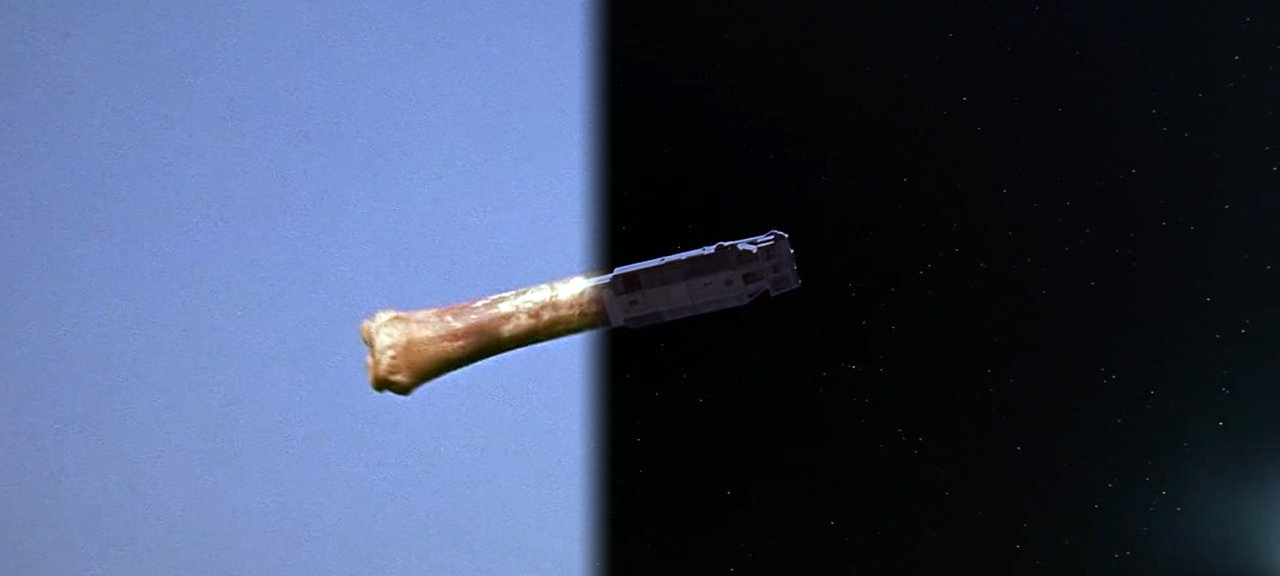
Lawrence of Arabia
A blown-out match instantly becomes a huge desert sunrise. This match cut transition isn’t just beautiful—it symbolizes the end of one journey and the start of another.
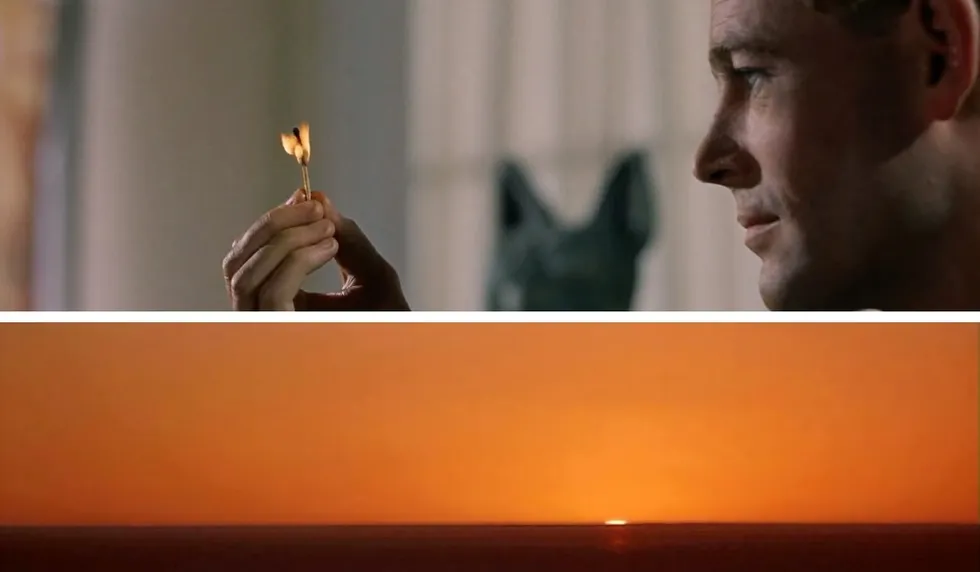
Psycho
In Psycho, a close-up of a woman’s eye blends into water swirling down a drain. It connects her death with the feeling of everything draining away. Powerful and creepy.
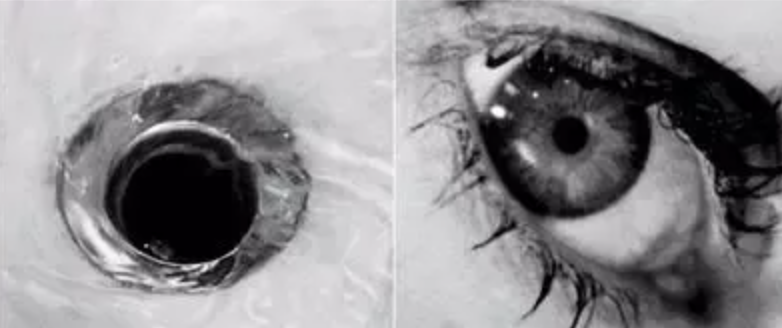
Shaun of the Dead
This comedy uses match cuts for humor. The main character does his morning routine, and later, those same actions happen during a zombie attack. It’s funny because it shows how life just goes on, even during chaos.
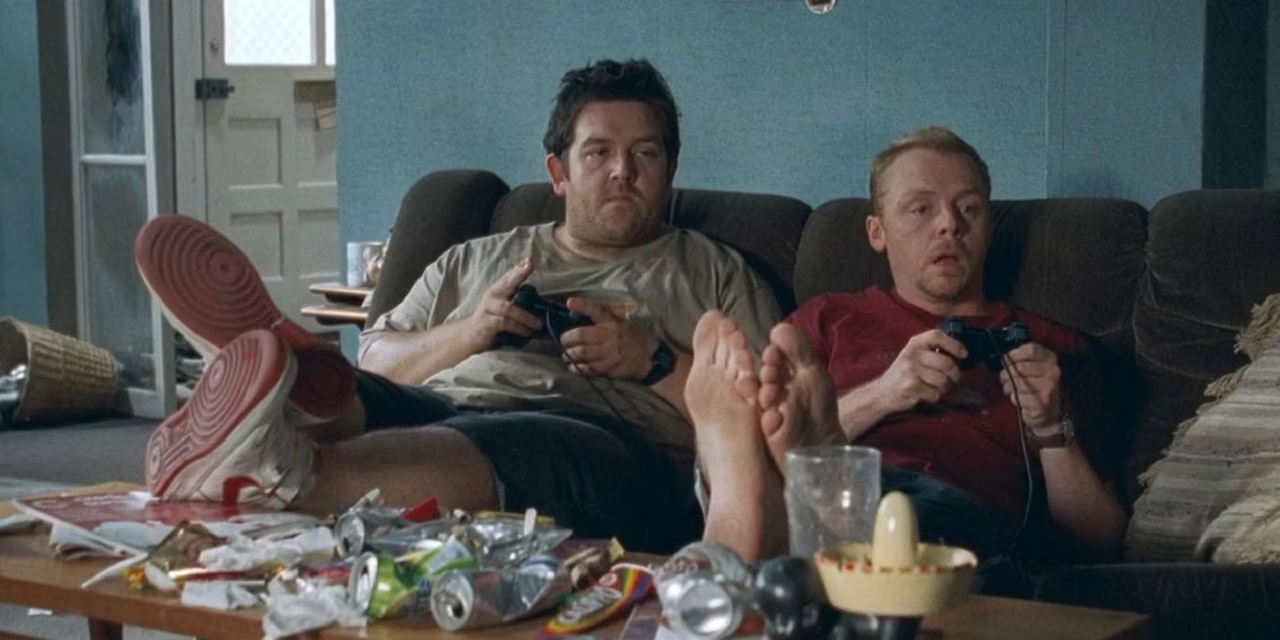
The Graduate
The main character jumps into a pool and then we see him floating on a raft. This match cut editing ties his physical action to his emotional state—he’s adrift and unsure.
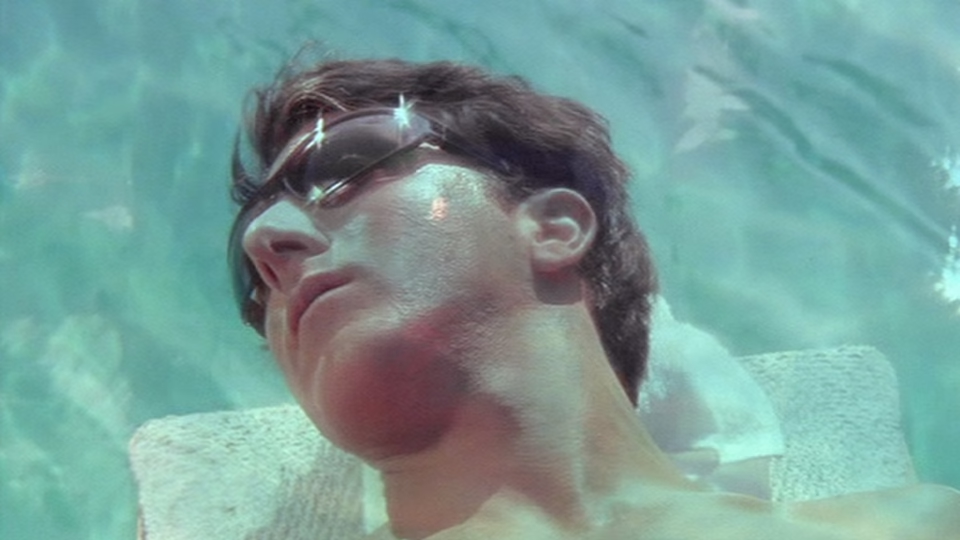
How to Use Match Cuts in Music Videos
Music videos are all about rhythm and style, and match cuts can make them even more engaging. Here’s how.
Match the Beat
Cut from one shot to another exactly on the beat of the song. It keeps the video in sync with the music and feels really satisfying to watch.
Sync Actions
If the singer moves their hand upward, cut to a dancer doing the same. Matching movements make the video feel connected and intentional.
Use Graphics
A spinning vinyl record in one shot can become a spinning car tire in the next. This graphic match shot technique is creative and reinforces the video’s style.
Blend Locations
Go from a busy city to a calm forest by using a similar camera sweep or a matching shape. It helps different places feel like part of the same world.
Match Colors
If one scene is full of red, transition to another scene that also uses a lot of red. Color matching gives your video a consistent mood and look.
CapCut — Your all-in-one video & photo editing powerhouse! Experience AI auto-editing, realistic effects, a huge template library, and AI audio transformation. Easily create professional masterpieces and social media viral hits. Available on Desktop, Web, and Mobile App.
Make Your Match Cuts Amazing with CapCut Desktop
Okay, so now you know what match cuts are and why they’re cool. But how do you actually make them? This is where CapCut comes in. CapCut is a video editor that’s easy to use but powerful enough to make pro-level edits, including really smooth match cuts.
Whether you’re new to editing or you’ve been doing it for a while, CapCut’s tools help you create exactly what you imagine without a lot of hassle.
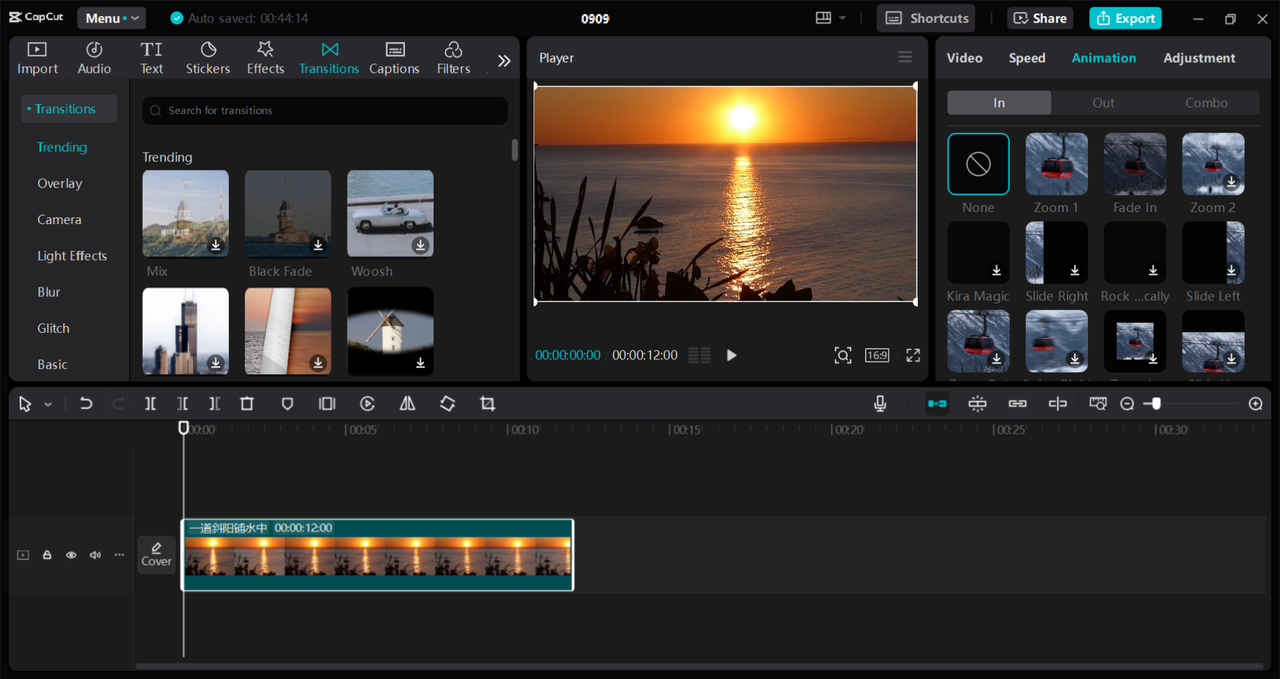
What Makes CapCut Great for Match Cut Editing
CapCut comes with a bunch of features that are super helpful for creating match cuts. Let’s look at some of them.
Quick Split Scenes
You can easily cut your video into smaller parts. This helps you pick the exact moments where you want to make a match cut.
Add Smooth Transitions
CapCut has transitions like fades, glows, and slides that you can drag and drop between clips. They make your match cut transitions look clean and professional.
Multi-Layered Timeline
Work with multiple video and audio tracks at the same time. This is super useful when you’re trying to line up actions or sounds perfectly for a match cut.
Adjustable Speed Curve
Change the speed of your clips—slow them down or speed them up—to make actions match perfectly across cuts.
Synchronize Audio
Easily match sound effects or music to visual moments. With a few clicks, you can make sure everything lines up just right.
Let’s Make a Match Cut in CapCut—Step by Step
Ready to try it yourself? Here’s how to create a match cut using CapCut’s desktop video editor.
Step 1: Upload Your Video
Open CapCut and bring in your video file. You can just drag it right into the workspace. Once it’s in, you’ll see it on the timeline.
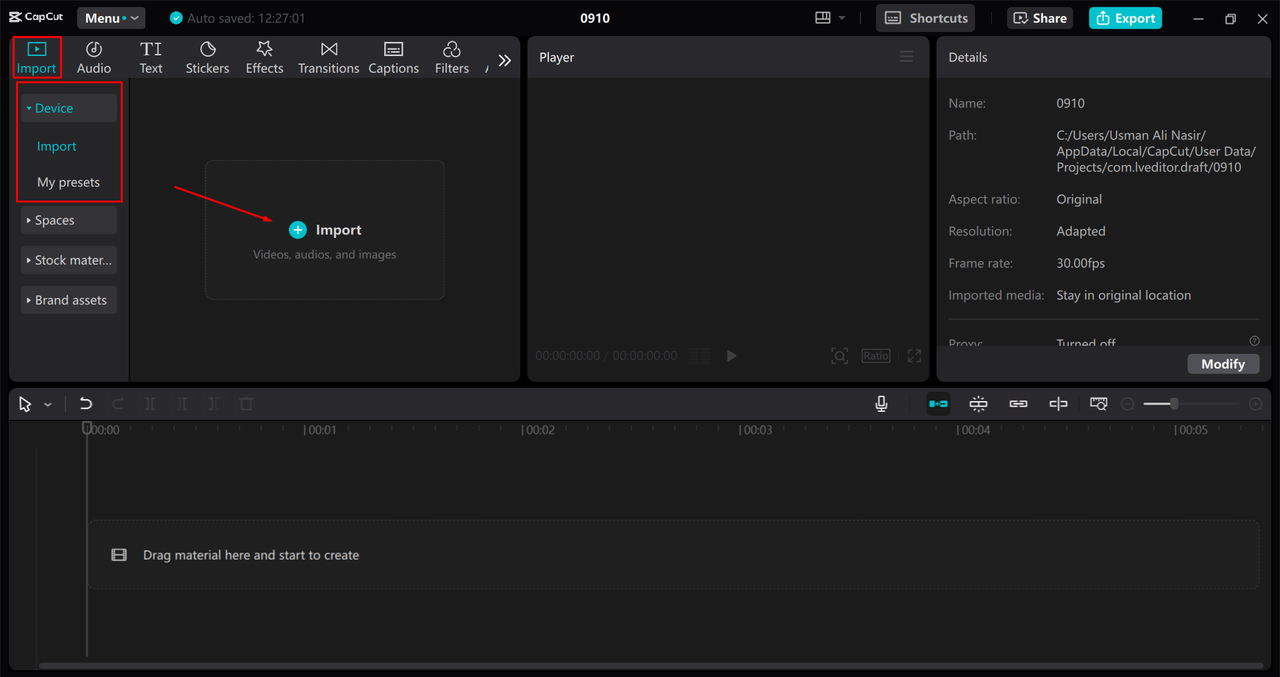
Step 2: Create a Match Cut Scene
Split your video into clips where you want the match to happen. Move them around so the two parts you want to connect are next to each other. Add a transition effect between them to make the switch smooth. Use the timeline layers to line everything up neatly.
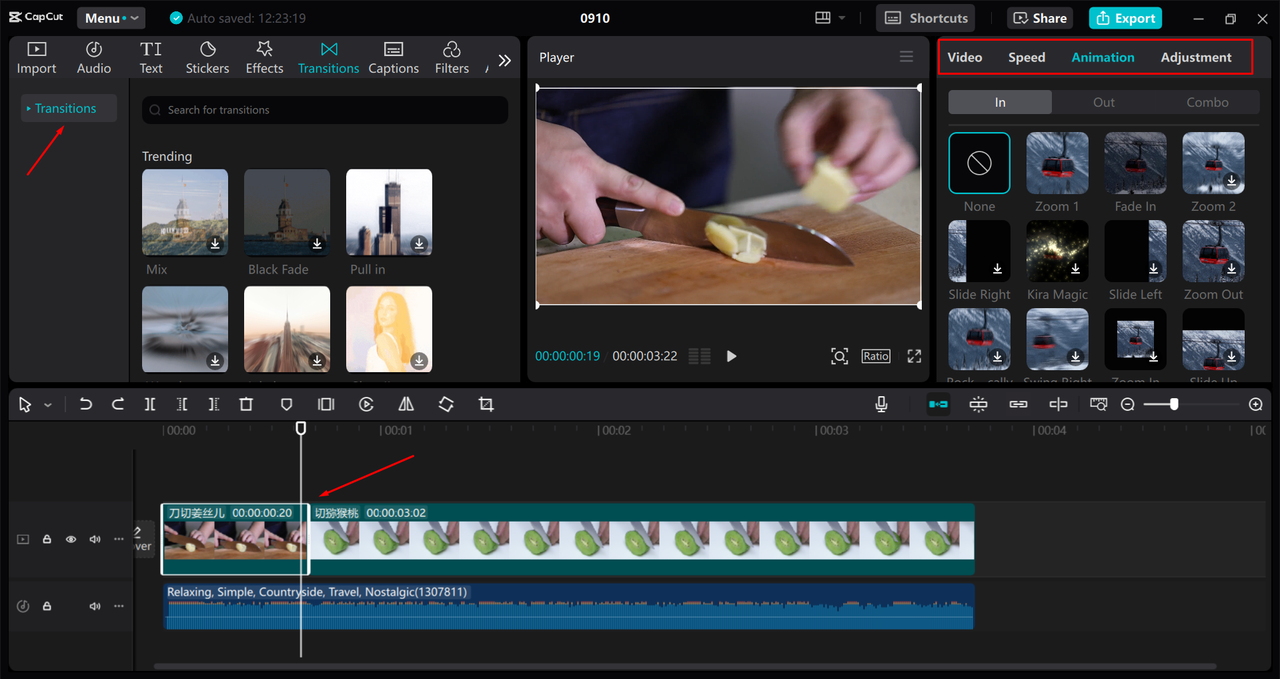
Step 3: Export and Share
When you’re happy with your edit, hit the “Export” button. Choose your format and quality, save the file, and you’re done! Now you can share your video with your friends or post it online.
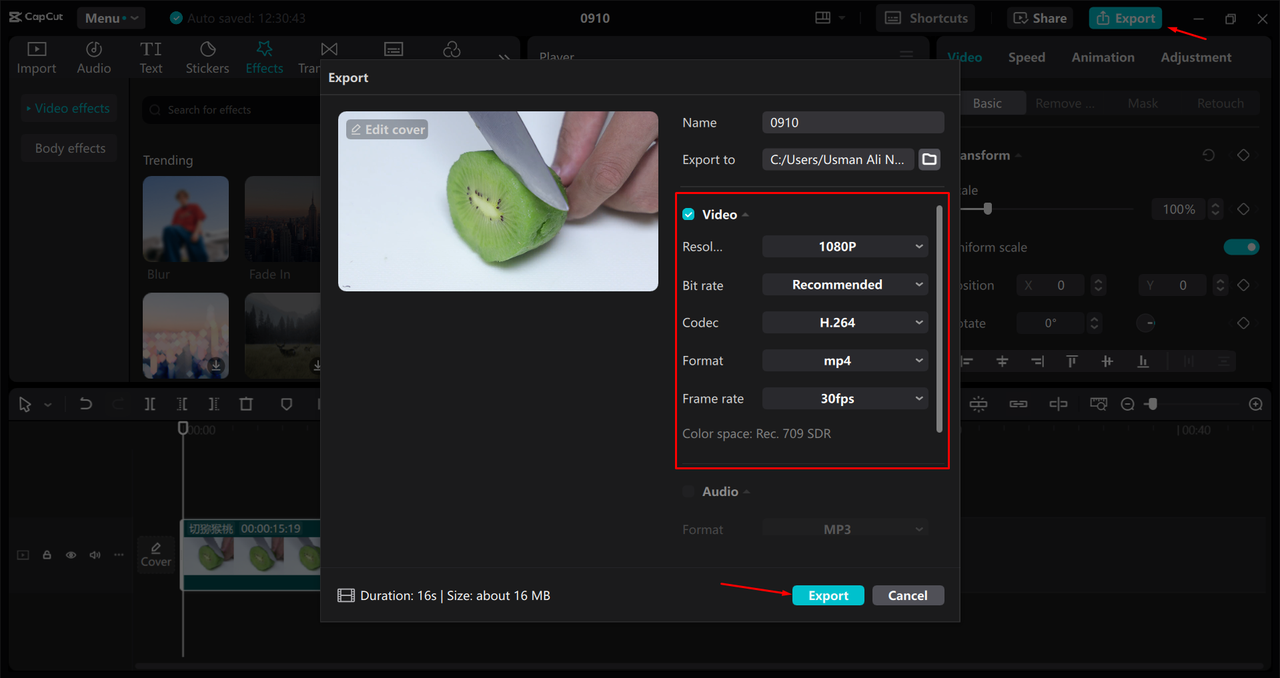
CapCut — Your all-in-one video & photo editing powerhouse! Experience AI auto-editing, realistic effects, a huge template library, and AI audio transformation. Easily create professional masterpieces and social media viral hits. Available on Desktop, Web, and Mobile App.
Wrapping It Up
Match cut editing is one of those techniques that can totally change how your videos feel. It makes them smoother, more engaging, and way more professional. Whether you’re making a short film, a music video, or just a fun clip for social media, using match cuts can help tell your story better.
And with a tool like CapCut, it’s easier than ever to try them out yourself. So why not give it a shot? Play around, experiment, and see how match cuts can level up your videos.
FAQs
Why should I use match cut effects?
Match cut effects make your video flow better by linking scenes through visuals, actions, or sound. They keep your audience watching and make your editing look pro. With CapCut, adding these effects is simple and intuitive.
What’s the difference between a match cut and a jump cut?
A match cut connects scenes with something in common, making the transition smooth. A jump cut is more abrupt—it jumps forward in time, often to show passing time or create a stylized effect. Both are useful, but they do different things.
Can you give a famous example of a match cut?
One of the most famous examples is from “2001: A Space Odyssey,” where a bone turns into a spaceship. It’s a classic graphic match shot that tells a story without words.
Some images courtesy of CapCut.
 TOOL HUNTER
TOOL HUNTER